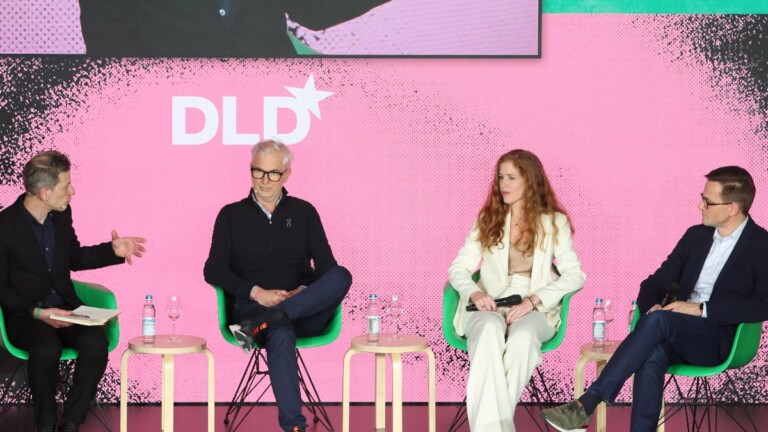Groundbreaking innovations in materials and computing promise a cleaner, more sustainable future. In this DLD25 session, moderated by Azeem Azhar (Exponential View), Dexmat CEO Bryan Hassin and Rodolfo Rosini, CEO of Vaire Computing, illustrate the possibilities of their companies’ innovations.
Hassin makes the bold prediction that “by 2050, steel, aluminum, and copper will be obsolete” – not because they’ll be successfully decarbonized, but because they’ll be replaced by superior alternatives. One example, Hassin argues, is Dexmat’s Galvorn, a nanomaterial that is stronger than steel, lighter than aluminum, and as conductive as copper.
The material’s applications range from practical infrastructure like bridges “20 times longer than bridges that are constrained by the weight of steel” to stronger, lighter power tansmission lines and even “lightweight, flexible garments that protect you from cuts”, Hassin says, while keeping their wearers warm and measure their vital stats.
Rosini describes the fundamental inefficiency of modern computers, which lose a lot of energy by heating up. In essence, Rosini says, “your computer is a heater that happens to perform some computation.”
Vaire Computing tackles this challenge through a new kind of chip architecture that minimizes energy dissipation – a concept developed at MIT in the 1990s but never commercially implemented until now. “We’ve created the first near-zero energy chip”, Rosini says.
He predicts that this new architecture will become the foundation of “how we’re going to be building computers probably for the next 100 years.”
Watch the video for details on both technologies, and find out why these breakthroughs came not from incremental improvements but by rejecting artificial constraints.





